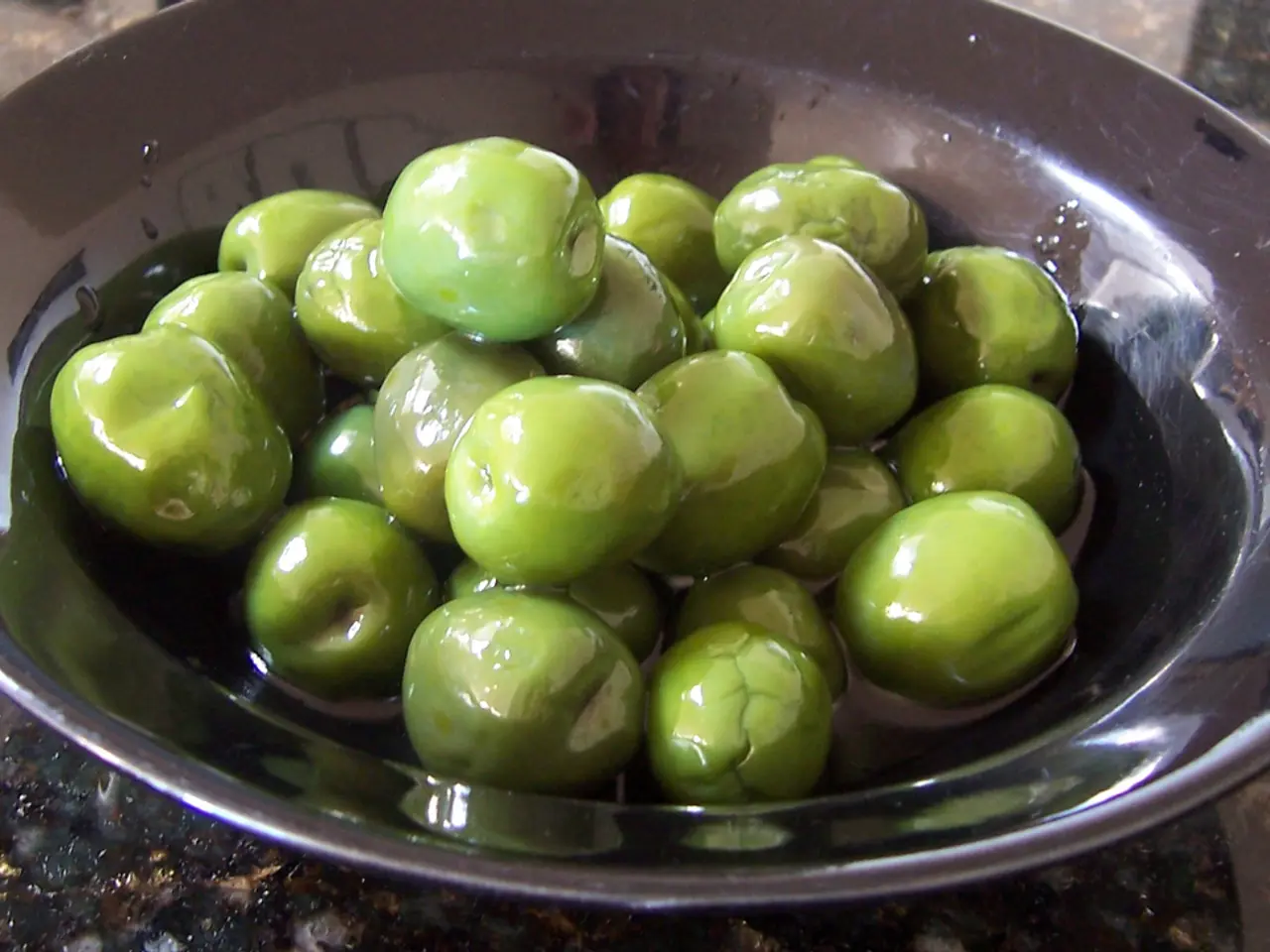Exploring the flavors of high-quality olive oil: A sensory journey
Manuela Opromolla, a fifth-generation olive oil producer and olive oil ambassador, believes that olive oil is like liquid gold. With a passion for the product, she has dedicated her life to raising awareness of its quality.
Young olives, when processed, contain different ingredients than ripe or fully ripe olives, resulting in a distinct scratching sensation in the throat. This quality feature, which can vary in intensity, is often present in high-quality olive oils. However, a mild oil that does not scratch in the throat may not be of the highest quality.
To identify high-quality olive oils, focus on factors such as taste, aroma, acidity level, polyphenol content, freshness, and certification standards.
- Taste and aroma: High-quality Extra Virgin Olive Oil (EVOO) is flavorful, often described as fruity, spicy, or slightly peppery with a pleasant bitterness or pungency. Avoid oils with taste defects or flatness.
- Acidity level: The best quality EVOO has a free acidity of less than or equal to 0.8%.
- Polyphenol content: Look for oils with high polyphenol content (>400 mg/kg per HPLC tests), as polyphenols provide antioxidant benefits and contribute to flavor.
- Freshness: Check for a recent harvest date (preferably within the past 12 months).
- Packaging: Dark or UV-protective glass bottles preserve flavor and nutrition by protecting oil from light and oxidation.
- Certification and testing: Independent lab testing ensuring peroxide values <9 meq/kg, free fatty acids <0.3%, and other quality markers can distinguish authentic high-quality oils.
- Sensory evaluation: Smell and taste the olive oil. A rich aroma followed by a balanced bitterness, pungency, and complexity suggests quality.
Where to find high-quality olive oils:
- Producers from reputable origins such as Greece, Spain, and Italy produce top-quality EVOOs, often with high polyphenol content and strong traditional profiles.
- Farmers' markets or specialty food stores allow you to meet producers or sample oils, increasing transparency and connection with the product.
- Reputable brands with transparent lab testing and recent harvest dates sold in dark bottles are good commercial options.
- Online sources with detailed product information, producer background, and third-party certifications can help you discover quality oils even if local options are limited.
Manuela Opromolla, who hails from the Auletta region, encourages consumers to ask questions when purchasing quality oil. She also offers lectures and tastings to introduce people to the world of olive oil. She was introduced to olive oil at a young age, with her mother occasionally adding good oil to her pasta when she was eight months old.
In a store, a jungle of labels may be encountered, and the label "Native Olive Oil Extra" does not guarantee quality or taste. It is essential to learn to recognize the qualities of high-quality olive oil, which can only be done through tasting.
High-quality and honest olive oil can be found in gourmet stores or at markets with traders. Test winner labels from organizations like Ökotest or Stiftung Warentest do not always guarantee a high-quality olive oil, as "good" is already considered a high standard. A high-quality olive oil should cost at least 15 € per liter due to production costs and trade margins.
For more in-depth information on various topics related to Neuss, subscribe to our free newsletter. If you have any inquiries about high-quality olive oil, you can reach Manuela Opromolla at [email protected].
- Cooking and lifestyle: Pairing high-quality Extra Virgin Olive Oil (EVOO) with the right dishes can greatly enhance meals, making cooking more enjoyable and enriching the overall dining experience.
- Home and garden: Apply EVOO to wooden cutting boards as a natural food-safe finish, helping to maintain the board and prevent food sticking.
- Food-and-drink and health: EVOO has been found to have numerous health benefits, including reducing the risk of heart disease, aiding digestion, and combating inflammation. Cooking with or drizzling it on healthy dishes can boost the nutritional content of your meals.




